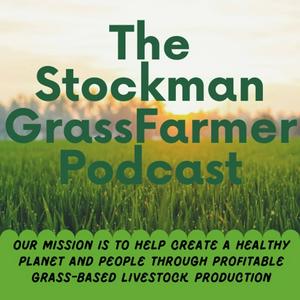Silvopasture Strategies with Greg Brann
🎥 Unlock Exclusive Grazing Education – Anytime, Anywhere!
Get instant access to 100+ hours of expert-led grazing courses with SGF TV—all for our lowest monthly price ever! New titles added, price stays the same, cancel anytime.
📲 Tap the link to start streaming now!
www.stockmangrassfarmer.digital/sgfv-podcast
>>>
🎙️ Episode Title: Silvopasture Strategies with Greg Brann
In this episode, Greg Brann shares how he integrates trees into his pasture-based livestock operation in Adolphus, Kentucky. The episode explores the practice of silvopasture—a regenerative approach that blends trees, forage, and livestock to enhance productivity and ecological balance.
Greg outlines the benefits of silvopasture, including increased forage through browse, timber value, improved livestock comfort, and better manure distribution. He emphasizes the need for intentional design, proper shade management, and species selection to make silvopasture work long-term.
Through practical examples, Greg breaks down the steps to get started and the tools needed to protect young trees, manage multi-species herds, and maintain healthy forage growth under partial canopy.
🔑 Key Points Covered:
What is Silvopasture?
Purposeful integration of trees and grazing
Ideal shade: 20–35%, or 4–11 mature trees per acre
Benefits of Silvopasture:
Extra forage (1,000–2,000 lbs/acre) from browse
Shade and comfort for animals
Improved soil health and grazing uniformity
Long-term timber value
How to Implement:
Thin existing woodlots or plant new trees (fence-line rows preferred)
Maintain at least 50% light penetration for forage
Protect trees until they reach 15 feet tall
Animal Considerations:
Multi-species options (sheep, goats, cattle)
Sheep cause the least tree damage
Livestock may be managed together or in rotation
🌱 Actionable Insights:
Start with a Clear Plan:
Define silvopasture goals and choose tree/forage species accordingly
Protect Your Investment:
Use tree tubes, offset fencing, or electric barriers to protect young trees
Manage the System:
Prune trees before limbs hit 2-inch diameter
Rotate animals frequently to avoid compaction
Choose Smart Forage:
Opt for shade-tolerant species like orchardgrass, fescue, eastern gamagrass, and Virginia wild rye
📌 For more insights and resources, be sure to visit us here for our latest specials and exclusive offers: https://www.stockmangrassfarmer.digital
👉 Tune in with your favorite podcast app to The Stockman Grassfarmer Podcast and discover how silvopasture can increase your farm’s resilience, productivity, and profitability—starting with the trees around you.
